Set Up Garage Workshop
Article by Mark Trotta
None of us have enough time or space for our old car projects. What will help is to organize our workspace as effectively as possible.
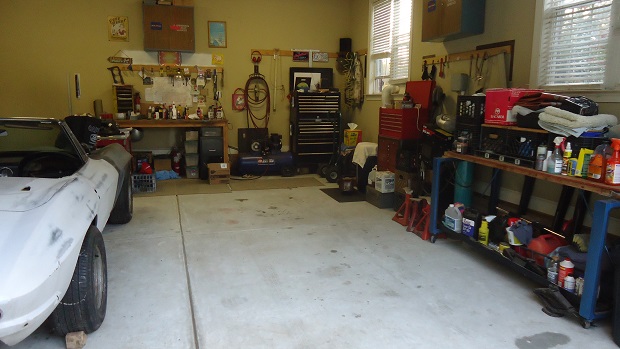
The goal is to have tools, equipment, and supplies accessible and ready to use.
Find what you need quickly and eliminate extra trips to the parts store!
From making a simple workbench to utilizing high ceilings for overhead storage, here are the best practices for getting more work done in your garage workshop.
____________________________________________
____________________________________________
Workbench
The 'nucleus' of a garage workshop is usually a workbench, with tools and toolboxes close by. An inexpensive workbench can be built with a saw, a drill, and a tape measure.
Lengths of 2x4's can be used for the legs, and 2x4's (or heavier) for the horizontal structure that will support the bench.
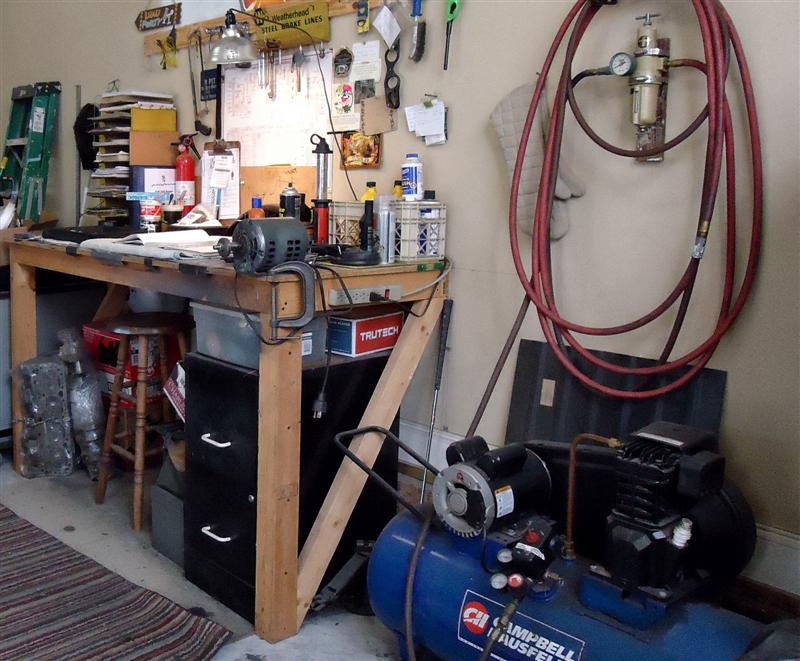
I built my workbench with 2x4's with a 3/4" wooden top. It's bolted to the back wall and is very sturdy.
Overall dimensions will vary, but on an average, a home-built workbench will be 32" to 36" high, 48" long, and 24" deep. These figures can be altered any way you like, to suit your own space and needs.
You can buy a workbench fairly cheaply, but if you do, get a heavy-duty one. A workbench with overhead lighting is a nice feature.
Workbench Placement
Most people set up their workbench along the back wall, but some garages are little more than a car-length deep, so consider having the workbench and tools along the side wall as an alternative.
If you decide on having a workbench on a side wall, the right side (passenger-side) wall is the better choice, so as to open your car's door towards the other wall. (unless of course you live in England!)
____________________________________________
____________________________________________
Good Lighting Is Essential
Good lighting reduces eye strain, and is essential to quality work. I'm fortunate that my present garage has two large windows which give great natural light during the daytime. When working at night, I rely on two twin four-foot fluorescent fixtures.
A single four-foot fluorescent fixture is a good choice to hang above your workbench or mount to the underside of a high shelf. For automotive bodywork, install enough light fixtures so that you can see everywhere without shadows. Painting the interior walls white will make a big difference in brightness.
************************
Garage Compressor
Having a garage air compressor and air tools saves you time and allows you to work more effectively. Like other shop equipment, they are an investment, so buy quality name brands.
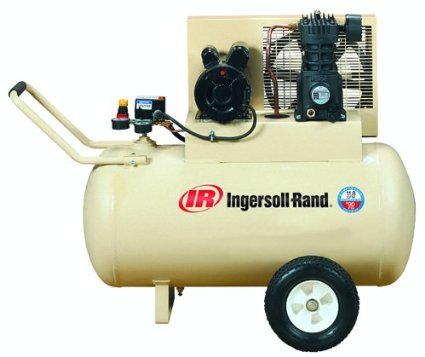
Air Tools
Some of my air tools are over 20 years old, and work just as well today as when I bought them.
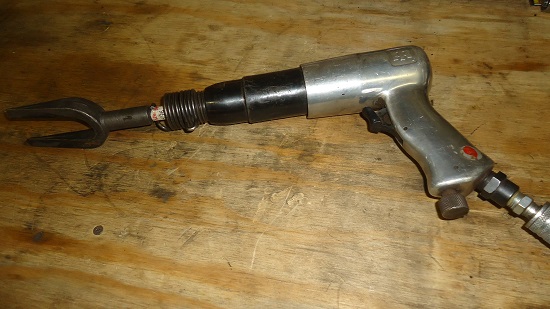
Read: Best Air Tools For Automotive
************************
Have Enough Electrical Outlets
Extension cords take up room and can be dangerous, not to mention a tripping hazard. While 110v power outlets every ten feet or so are enough for most garage equipment, air compressors and larger welding machines need a higher electrical output.
Author's Note: I paid a licensed electrician to install a 50 amp 220v circuit for my air compressor.
____________________________________________
____________________________________________
Everything On Wheels
Aside from a sturdy workbench, having shop equipment on wheels (engine stand, roll-around tool boxes, welder, etc.) gives you the option of rearranging your workspace for different needs.
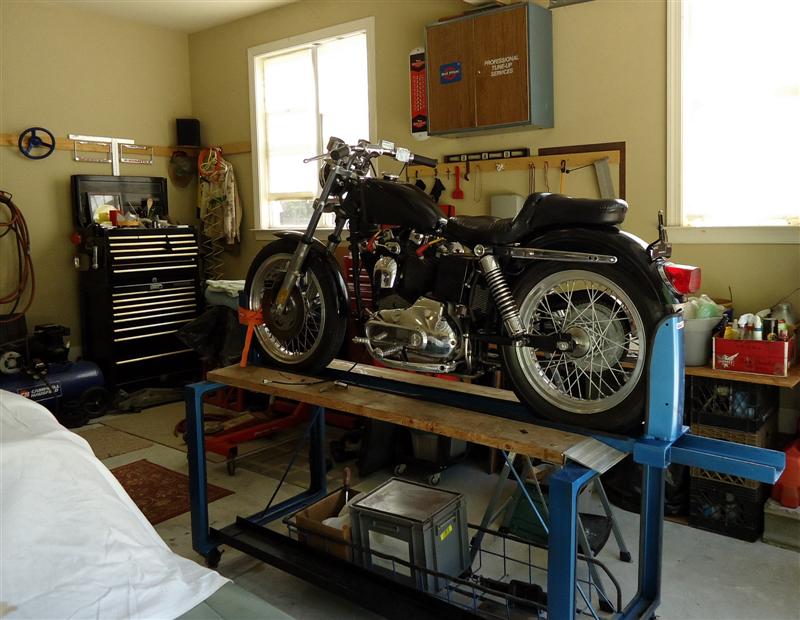
With everything on wheels, it's easy to move everything from inside the garage to outside, then start bringing in the biggest items first and putting them in place. Play around with several designs, varying placement of large items that will take up floor space.
************************
Have A Place To Move Your Project Car
If you block up the garage with your project, you'll have no room for minor maintenance on other vehicles, such as changing oil in your daily driver. If your driveway is large enough to park an extra car on, use it as a staging area for a day or a week.
Have Storage Space Other Than The Garage
A shed is usually the best place to house all yard tools and equipment, but it can also can be used for garage equipment you seldom use (sand blaster, engine hoist, etc.)
************************
Utilize High Ceilings
If your garage happens to have a high ceiling, use that to your advantage (high ceilings come with high walls). Install tall shelves, even if you need a step-ladder to reach them. Store things on them that you don't need to get to often, like old parts or rarely-used tools.
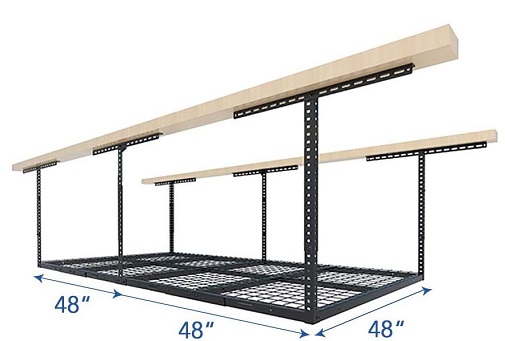
High ceilings can be utilized for an overhead storage rack.
************************
Small Parts Container
Think about it, if you didn't have a small parts storage bin, where would your nuts, bolts, screws, and small parts be? The answer is, anywhere and everywhere!
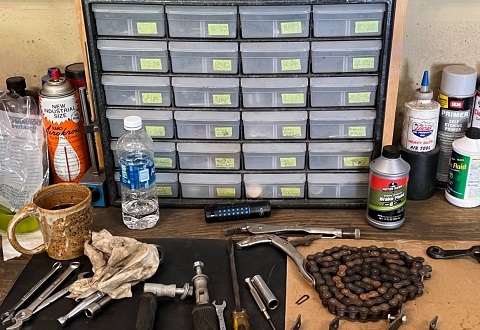
An itemized bin for fasteners and small parts will save you time looking for nuts and bolts and other small items.
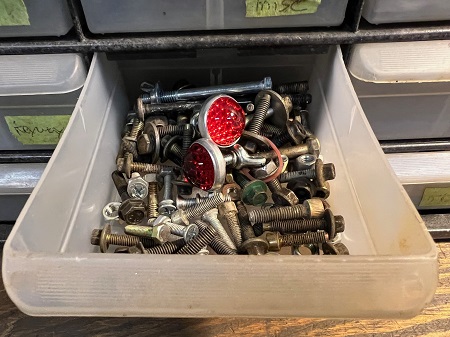
Mine is an Akro Mills with 24 drawers.
************************
Safety First and Always
While working in your garage please be safe. Proper protective equipment includes safety glasses with side shields, foam ear plugs, and gloves. When cutting and grinding metal, wear a face shield.
************************
2024 Update: Service Carts
Recently I came across two used rolling carts. One is 30" x 16" made of steel, the other one is a 30" x 16" made of polypropylene (plastic).
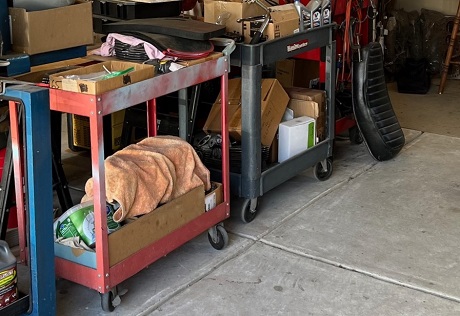
They both have a top and bottom shelf, and stand at 32 inches tall. Very useful.
************************
Related Articles: